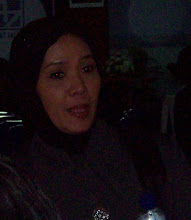
The Meaning of Community Organization
Definition
• C.O:-a process by which a community
identifies & ranks needs, problems or
objectives
develops confidence & will to work
finds resources (internal & external)
takes action, develops cooperative &
collaborative attitudes & practices
solution of the problem
to attain objective.
• Process: - conscious or unconscious
- voluntary or involuntary
Develop capacity of comm. to
function effectively as integrated
unit
• Community:
People in a specific geographic area
People who share common interest or function i.e. education, agriculture, health.
'functional community',
• differ in its objective, but
• similar process in CO.
• Identifying problem:
felt need, a feeling about' , not because
reasonable, logical or scientific.
• 'How will we rank' rather than 'this is the problem', …………process
• Finding 'internal v s external resources.
PROFESSIONAL WORKER
MAY ASSIST OR HELP:
• INITIATE,
• NOURISH,
• DEVELOP THE PROCESS
DD. PROCESS vs METHOD
USING METHOD TO FACILITATE THE CO- PROCESS BEING CONSCIOUS, DELIBERATIVE AND UNDERSTOOD
TIGA MODEL C.O. menurut Rothman (Glanz, 1990).
a) Model A -- LOCALITY DEVELOPMENT(Community Development)…process oriented,
Stressing consensus and cooperation, building group
Identity & a sense of community.
b) Model B -- SOCIAL PLANNING…task oriented, stressing
Rational-empirical problem solving, usually by an
Outside expert.
c) Model C -- SOCIAL ACTION… task & process oriented.
Increasing problem-solving ability, with achieving
Concrete changes to redress imbalances of power &
privilege.
Those are mutually exclusive, but appear to exhibit a central tendency that most appropriately within one of the three categories.
‘Community”:
Ecological system perspective….geographic comm. focuses on population characteristics (sex, ethnic, density, heterogeneity, physical environment, social organization. Or structure & technological forces impacting upon it).
Social systems perspective …. Functional comm. Focuses on exploring the interaction of comm. subsystem (economic, politic, social development)
KEY WORDS in C.O.:
1. EMPOWERMENT… MASTERY OVER THEIR OWN
LIVES.
… FROM THE WORDS: POWER & FREEDOM
**POWER: ABILITY TO PREDICT, CONTROL AND
PARTICIPATE
**EMPOWERMENT: PROCESS ---ENABLE COMM. TO
TAKE POWER
TWO LEVELS OF EMPOWERMENT:
1. INDIVIDUAL LEVEL
2. COMMUNITY LEVEL
INDIVIDUAL LEVEL:
**** PSYCHOSOCIAL FACTOR, TO IMPROVE:
• PERSONAL CONFIDENCE
• INDIVIDUAL COPING CAPACITY
• LIFE SATISFACTION
COMMUNITY LEVEL:
• INCREASE COMMUNITY COMPETENCE
• BETTER IN COLLECTIVE PROBLEM SOLVING
2. COMMUNITY COMPETENCE
Social network techniques
Change agent help comm. to :
- identify natural helpers or leaders within comm.
- identify their own networks
- understand community patterns
- identify high risk-groups
- sense of ownership of the organization
LEADERSHIP DEVELOPMENT IS KEY ASPECT OF DEVELOPING COMPETENT COMMUNITIES.
TWO PRINCIPLES CENTRAL TO C.O. PRACTICE, ARE:
1. PARTICIPATION
2. RELEVANCE or ‘starting where the people are’
Both principles root in social psychology theories of learning and adults education. The learners should be active participate in learning process; learn by doing –grounded in stimulus-response theory.
PARTICIPATION
Individual must experience a felt need to change or to learn, …before learning and change can take place.
Kurt Lewin (1958) : ‘unfreezing’ of old attitudes and beliefs, before consider and try new ones.
Hochbaum’s (1960): ‘ a psychological state of readiness to learn’ before particular change can occur.
Allport (1945): catharsis, which he describes as a necessary first step in the breaking of prejudice
Alinsky’s (1972) in social action: the need to disorganize communities (stirring frustration, creating dissatisfaction with status quo) before they can be organized or, more properly reorganized.
Conclusion:
- not single but a complex process
- old attitudes and practices must be opened to reexamination (unfrozen), before change can take place.
RELEVANCE or ‘starting where the people are’
must begin with individual’s or comm.’s felt needs and concerns (Nyswander,1966).
Within the context of preexisting goals
to be effective, issues selected must be winnable and specific.
to develop sense of ownership of the organization, issues must be selected by the community itself.
Issue Selection.
• Winnable, … not cause disappointment or reinforce fatalistic attitudes and beliefs
• Simple & specific, … any member can explain it clearly
• Unite members of the group, and involve them in issue resolution
• Giving leadership experience, increase visibility
• Part of a larger plan or strategy.
Methods for selection:
• Nominal group process (Delbecq, 1975)
• Door-to-door survey
• Paulo Freire’s (1973) problem-posing dialogical
Creating ‘Critical Consciousness’
• Stressing a relationship of equality and mutual respect
Working together in Small groups, men and women discuss common problems, then were challenged to look for the root causes (problems behind the problems)
Tugas saudara untuk pertemuan mendatang : membuat resume dari referensi/sumber lain yang sesuai dengan latar belakang pekerjaan untuk dipresentasikan. Seluruh tugas dikirim by email selambat-lambatnya sehari sebelum pertemuan kuliah..Insya Allah pesawatnya tidak delay.






























No comments:
Post a Comment